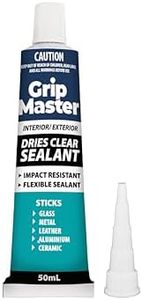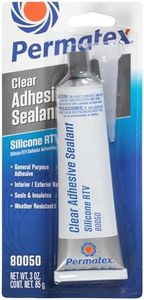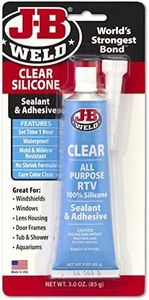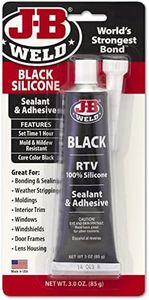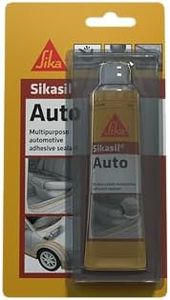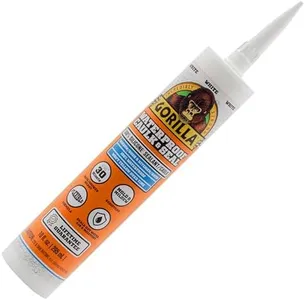We Use CookiesWe use cookies to enhance the security, performance,
functionality and for analytical and promotional activities. By continuing to browse this site you
are agreeing to our privacy policy
10 Best Silicone Caulk
From leading brands and best sellers available on the web.By clicking on a link to a third party's website, log data is shared with that third party.
Buying Guide for the Best Silicone Caulk
When buying silicone caulk, it's important to know that this product is mainly used to seal gaps, cracks, and joints in places that may be exposed to moisture, temperature shifts, or movement. The right caulk keeps water, air, and dirt out, helping prevent damage and maintaining a clean appearance. To make an informed choice, you should understand the key specifications so you can pick the best product for your project, whether it's a bathroom, kitchen, or an outdoor space.Cure TimeCure time refers to how long it takes the silicone caulk to fully dry and set after you apply it. This is important because using or exposing the area to water before the caulk is cured can ruin the seal. Cure times can vary, with some silicones drying in a few hours for light exposure and others needing up to 24 hours or more for a full set. If you're sealing an area that needs to be used soon, look for a fast-curing variety, but if time isn’t an issue, regular cure time works just as well.
Mold and Mildew ResistanceSilicone caulk can come with additives to resist mold and mildew, which is especially useful in bathrooms, kitchens, or places with high humidity. This spec helps prevent black or unsightly stains over time, keeping your caulk looking clean and fresh. If you are caulking an area regularly exposed to moisture, like around tubs, sinks, or outdoor applications, picking a caulk with good mold and mildew resistance is a smart choice.
PaintabilitySome silicone caulks are paintable, while others are not. This means you can paint over certain types after they cure, letting you match the caulk to your decor or wall color. If appearance matters and you want a seamless look, make sure to choose a paintable caulk, but if color matching is not a concern or you're working in an area hidden from view, regular non-paintable caulk will do.
FlexibilityFlexibility indicates how much the caulk can move or stretch without cracking or losing its seal. This is crucial for areas that expand or contract, such as windows, doors, or materials prone to movement. More flexible caulks handle these shifts better and are less likely to fail over time. If you're sealing joints that are likely to move, prioritize a high-flexibility silicone caulk.
Application SurfaceSilicone caulks are formulated for different surfaces, such as glass, ceramic, wood, metal, or plastics. Not all caulks adhere equally well to every material. To ensure a strong, lasting bond, check that the product lists the surfaces you'll be working with. If you're unsure or dealing with mixed materials, a 'multi-surface' or 'all-purpose' formula is a safe choice.
ColorSilicone caulks are available in various colors, such as clear, white, or almond. Color matters if you want the seal to blend in or contrast with your surfaces. Clear and white are the most common and versatile options, but some manufacturers offer additional colors to match your design. Think about whether you want the caulk to be noticeable or discreet in your finished project, and pick the color accordingly.
